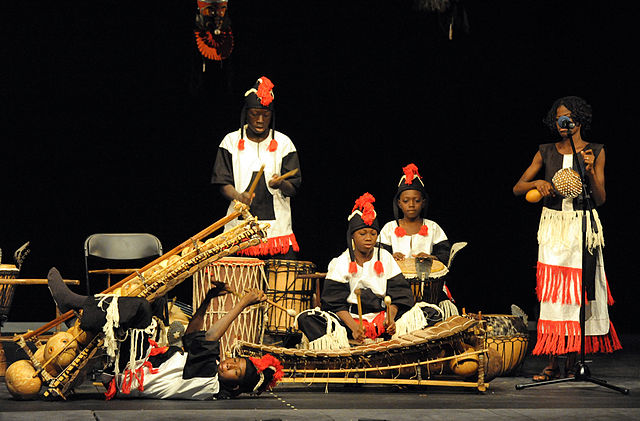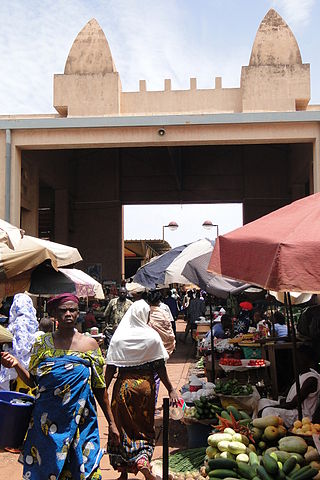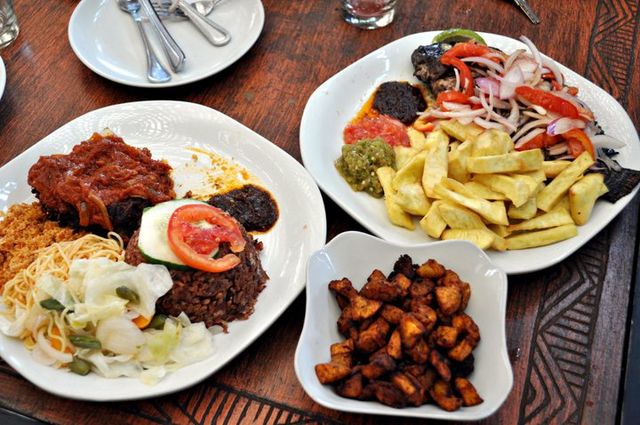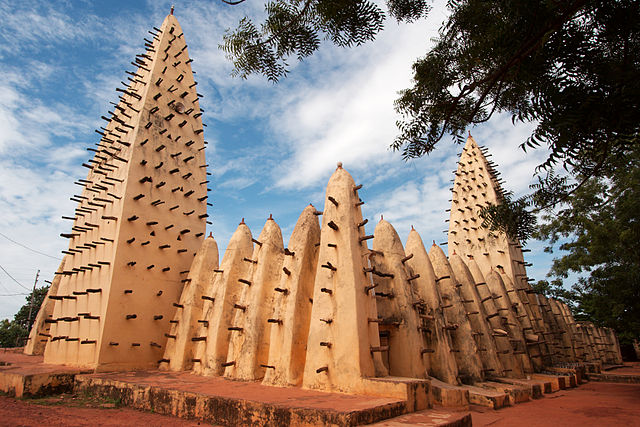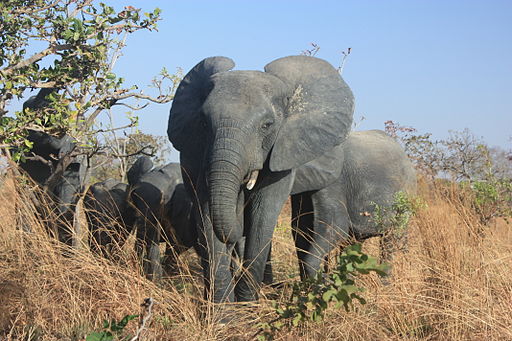Burkina Faso made headlines when the army ousted President Blaise Campoare on October 30, 2014. Despite this, the landlocked nation of 17 million in the middle of West Africa has otherwise been a bastion of stability for years. And though it’s one of the poorest countries in the region and world, it has a rich culture and history. Burkina Faso has bustling cities, a vibrant music scene, excellent markets, and amazing natural beauty. And did we mention it’s astoundingly inexpensive? Read on to discover 15 things you didn’t know about Burkina Faso, one of Africa’s least explored countries.
1) What’s in a name?
Burkina Faso means the ‘land of honest people’ in the local Mossi language. Colonized by the French and originally called Upper Volta (after the Volta region it is located in), it gained independence in 1960, along with many other African states. The capital Ouagadougou (pronounced wah-ga-doo-goo) means ‘you are welcome here at home with us’ in the local Moore dialect. Sounds like a very inviting place to us!
2) Out with the old…
If you’ve been following African news lately, you’ll have seen that President Blaise Campoare was deposed by the military on October 30, 2014. Street protests by the country’s large youth demographic over unemployment and poor living standards finally boiled over as the former President announced he would run for election again in an attempt to extend his 27 year hold on the top position.
3) Incredibly rich music scene
Burkina Faso has over 60 ethnic groups, each with their own style of music and instruments. Music is a way of life in Burkina and you’ll be able to find live music all over the place in the larger cities. Reggae, salsa, soukous, and folk along with traditional styles. Digging in and really exploring the musical landscape will give you a greater understanding of the different ethnic groups. Ougadougou and Bobo-Dioulasso also feature yearly Jazz and Hip Hop festivals. Be sure to visit the National Museum of Music, too.
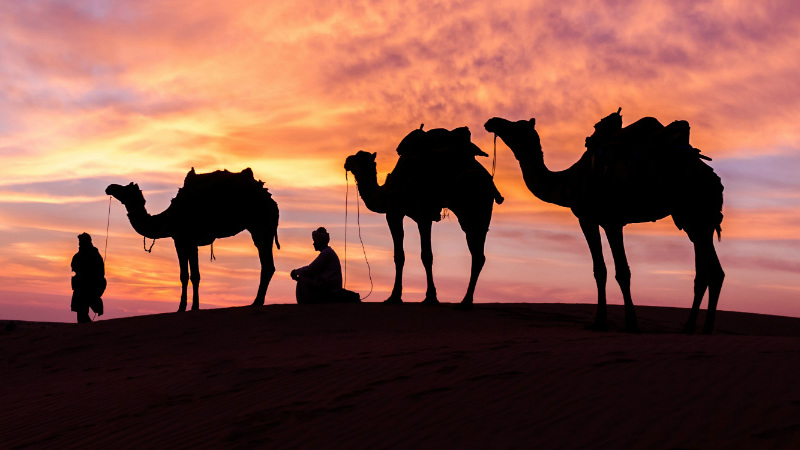
Shutterstock
4) Camel treks
Wait, where are we again? The northern half of Burkina Faso lies smack in the middle of the Sahel, the arid semi-desert strip that runs the breadth of Africa and separates the Sahara from the tropical south and interior — semi-desert sand and shrublands populated by nomadic Tuareg and Fula people. You can hire guides from the town of Gorom Gorom to take you out to the bush via camel for a truly unique experience under the stars.
5) Shop to your heart’s content
Burkina Faso has some of the richest culture and heritage anywhere on the continent and some of the most amazing handicrafts, carvings, and masks can be found in its multitude of markets. Ouagadougou hosts the International Art and Craft Fair every other year, one of the largest in Africa. Make sure you take enough cash and get your haggling skills ready. Now, how to get everything back home…

6) The wild west
The west of the country is home to some its most beautiful natural areas including the waterfall of Banfora. The sleepy town has ample accommodation and the waterfall makes for a peaceful escape from the bustling city. Nearby is a lake where you can hire a local to take you out on a pirogue to see wildlife, but do so at your own risk as hippos inhabit the lake as well.
7) Cuisine
Some visitors claim that West Africa has some of the best cuisine on the continent. Burkina has all the delicious staples you could hope for — sorghum, millet, maize, peanuts, yams, beans, and okra as well as plenty of chicken, fish, and mutton. Most are served with a number of tasty sauces. Burkina Faso also has a wide array of drinks (alcoholic and non) made from millet, sorghum, and fruits like the baobab.
8) Ruins of Loropeni
Set in the dense forest near the market town of Loropeni are the ancient stone walls and ruins of Burkina Faso’s sole UNESCO World Heritage Site. The walls and foundations are believed to have enclosed the courtyard and buildings of Kaan Iya, the former king of the Kaan people. Scholars say that the ruins of Loropeni are the best preserved fortified settlement in all of West Africa.
9) Dance, dance
Similar to the Dogon peoples just over the border in Mali, the Gurunsi peoples hold fast to their ancient cultural traditions including mask dances. While they are not routinely performed for tourists, you can usually find a reliable guide in Ouaga or Bobo that may be able to arrange a visit to a village. The masks all represent different things, some invoke animals while others venerate the dead. Used in conjunction with sacred dances for various ceremonies, witnessing an authentic performance is undoubtedly a highlight should you get the opportunity.
10) Bobo-Dioulasso
No, we’re not just making up words and sounds, Bobo (for short) is the second largest city in Burkina Faso. Bobo is a center of trade as well as culture and music in Burkina. There is plenty to see and do here including visiting the Old Mosque, perhaps the best example of Sudano-Sahelian mud architecture outside of Mali. Dress modestly if you visit as it is an active places of worship, and tip your guide or whichever boy is guarding your shoes at the entrance.

11) A pound of cotton vs. a pound of gold
Which weighs more goes the old riddle? Technically they both weigh the same, but gold and cotton are Burkina Faso’s main exports and fuel its underdeveloped economy (Burkina is one of the poorest countries in the entire world). While gold miners work in poor conditions and make a pittance, almost all of the cotton is grown from genetically modified seeds and Burkina is the second largest producer of biotech crops on the continent after South Africa according to the State Department’s factbook.
12) The peaks of Sindou
West of Banfora, you’ll come to the town of Sindou which is home to some of the most dramatic scenery in the entire country. Jagged peaks rise like titans out of the dry savannah. With ample opportunities for day hikes or multi-day treks (with a guide of course), the area is perfect for camping, cycling, picnics, or cultural tours. There is a tourism co-op in Sindou town which can arrange everything for you.
13) Get back to nature in Nazinga
Arguably the best park in the country, Nazinga Reserve is located in the south near the border with Ghana. Your best bet for a safari in the country, antelope, monkeys, warthogs, and crocodiles can be seen in abundance along with a plethora of birds and the main attraction, elephants. Plenty of outfitters can help you out from Ouagadougou and the accommodation range from modest to (almost) luxury at Campement de l’Elephant.

14) Festivals
With such a rich amount of culture from Burkina’s more than 60 ethnic groups, you know the country is teeming with festivals. Between mask dances to music and the international arts and crafts fair, planning your trip to coincide with one should be a given. Burkina Faso is also home to the Festival Panafricain du Cinema, Africa’s largest film festival held every other year in the capital.
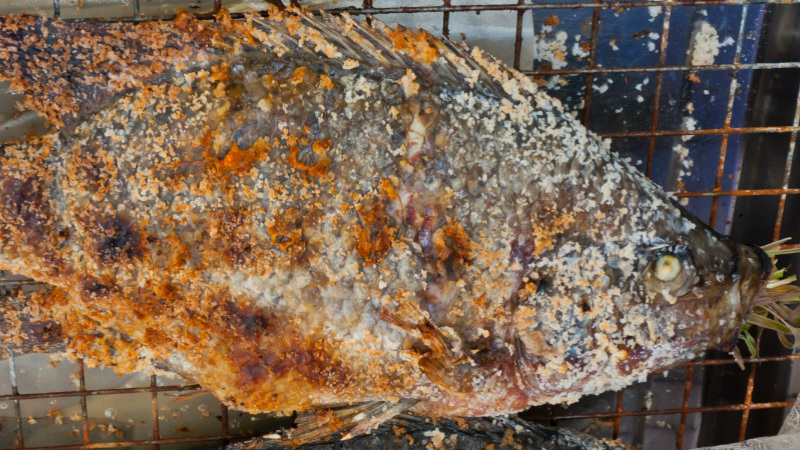
Shutterstock
15) So long, and thanks for all the fish
Another interesting attraction is the Sacred Fish of Dafra, outside Bobo. Only select Bobo (the main ethnic group) are allowed to perform sacrifices which involve chickens, goats, and dolo (a local brew), but local guides can take you along the river to bear witness to the event which pays homage to the local catfish in the area. Revered as ancestors, sacrifices are made to fulfill wishes and honor the dead. Drop us a line if yours comes true.
Related content on AFKTravel:
VIDEO: Fulani Artisans In Burkina Faso
The 15 Most Interesting Historical Sites In West Africa
15 Things You Didn’t Know About the Sahel
Want to discover the finer side of Africa? Sign up for our weekly newsletter.


